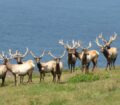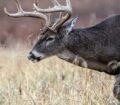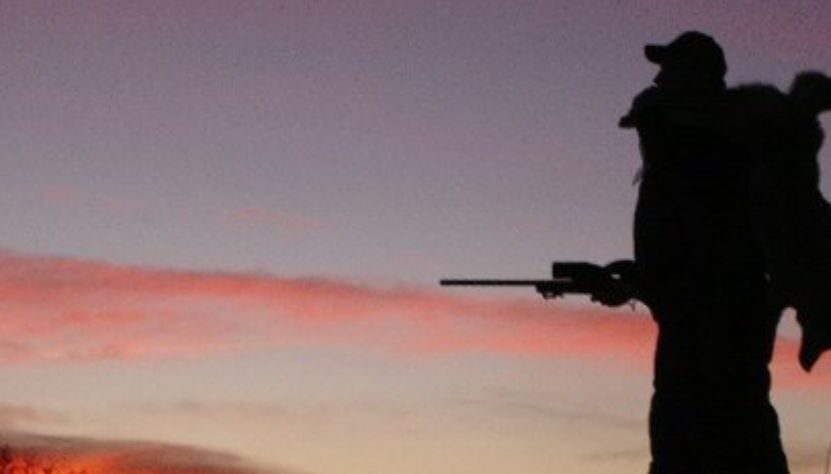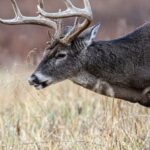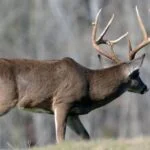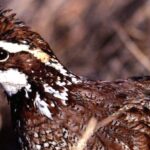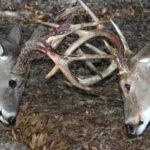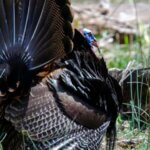Editor’s Note: Start now to manage your hunting lands for maximum wildlife production by maintaining the roads on your hunting property or hunting lease and controlling predators. JITW spoke with Chuck Sykes, the Director of Wildlife and Freshwater Fisheries in the Alabama Department of Conservation and Natural Resources (DCNR), about how the State of Alabama is meeting the growing demand for public-land deer and turkey hunters to have opportunities to hunt lands intensively managed for wildlife like owners manage their private lands. As new public lands have become available to be purchased by the Game & Fish Division, this division has implemented land-management practices in these areas to improve them for maximum wildlife production and older-age-class animals. The DCNR also has limited access to these lands by using a drawing system similar to that of the hunting permit trophy areas in western states. These strategies, when used, can help you improve the land you hunt if you own the land or have the landowner’s permission to implement these land-management tactics.
Maintain Roads:
Roads on public lands aren’t just for vehicles. The planting of pine trees on public lands shades the road, and the road will resemble a tunnel.
“The DCNR does road maintenance by thinning pines and other brush back to 20 – 30 feet on each side of a road,” Sykes reports. “Then more sun can hit the roads and cause them to dry out quicker than if the roads are shaded. We create ditches on the sides of the roads and crown the roads to help drain water off the roads. These operations reduce the time needed to maintain our roads on the state’s WMAs. We also make a clearing from the ditch on the side of the road up to the road that we can use to create a habitat where turkey poults and quail chicks can feed and grow. Another need that wildlife has, especially turkeys and quail, is grit for their craws. So, we put gravel alongside the roads, the birds eat that gravel, and it grinds up the food in their craws.”
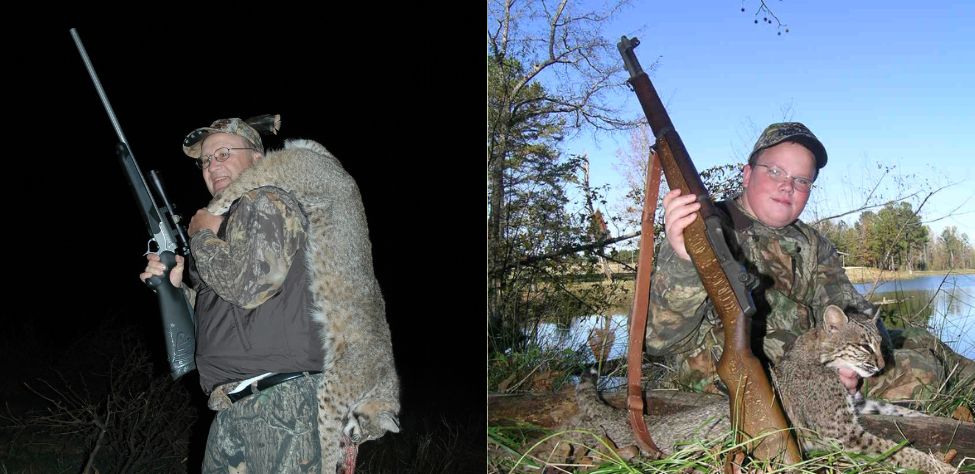
Control Predators:
It would be best to control predator populations on your hunting lands to have more turkeys and deer. You can get help from the state since anyone who wants to buy a trapping permit can trap furbearers on public lands. Some of the worst predators – coons, coyotes, possums, skunks, foxes, and bobcats especially – impact turkeys and ground-nesting birds.
But Sykes reports, “Don’t overlook that feral hogs also eat turkey eggs, destroy nests, and kill turkey poults and deer fawns. At Portland Landing, which the state oversees, wildlife biologists and crews have trapped over 600 wild hogs in one year. However, trapping is very labor-intensive and time-consuming. Predator removal is much like cutting grass. Doing it weekly or bi-weekly every year would benefit wildlife positively. If I were a private landowner, I’d trap raccoons and possums just before March to reduce those predator numbers before turkeys nest. To increase my deer herd, I’d trap coyotes and bobcats in August when fawns are just being born.”
Dr. Stephen Ditchkoff, a longtime feral hog researcher from Auburn University, believes that a group of wildlife scientists are within about four years of producing “A toxicant made of sodium nitrite in a bait form and using feeders to deliver it to wild pigs. This chemical has proved to be a humane but very effective toxicant. Scientists hope landowners and hunting club members can use this toxicant to target feral pigs and eliminate them on agricultural lands and hunting properties.”
However, Sykes says, “Actually, a landowner can do a better job for wildlife for less time and money by improving habitat than if he traps every predator on his land. By doing an effective job at burning, thinning timber, and creating a better habitat where little critters like turkey poults, baby fawns, and quail chicks can get away and hide from predators, then we have done a much better job to help produce more wildlife with the amount of time and money we have, than if we rely only on trapping for predator removal.”
Looking for more content? Check out our YouTube channel and watch “Bet on Bottlenecks for Your Tree Stand Sites” by John E. Phillips.

How to Hunt and Take Big Buck Deer on Small Properties
In this book, you’ll hear from 14 hunters who either have gained permission or leased properties as small as six acres to as much as 250 acres, and how they consistently take older-age-class bucks off these little lands.
VERSIONS: AUDIBLE, KINDLE & PRINT

Jim Crumley’s Secrets of Bowhunting Deer
Using a black magic marker and a gray work jumpsuit, Jim Crumley of Buchanan, Virginia, drastically changed the nature and purpose of hunting camouflage when he created the first sportsman’s camouflage – Trebark. Crumley’s love of bowhunting and his desire to be more invisible changed hunting clothing forever.
In this hunting guide, he shares the wisdom that he’s learned throughout his lifetime about how to be a hunter, how to find a deer lease, how to scout for deer, and more.
Special features include how to:
- Have a magic 60 acres to hunt
- Decide the best equipment to use
- Find deer year-round
- Locate land to hunt
- Know the best place to put your tree stand
- Get bucks within bow range
VERSIONS: AUDIBLE, KINDLE & PRINT

How to Hunt Deer Like a Pro
How do you know if the land you hunt has a trophy deer on it? Wildlife manager Bob Zaiglin, of Uvalde, Texas and Jim Crumley, the father of modern-day hunting camouflage, tells you how to find out. GPS can make finding and taking that trophy buck easier. This hunting guide will teach you how to hunt big bucks where no one else can find them, how to call deer, and how to become versatile as a deer hunter, so that if one deer tactic doesn’t work, another one will.
In the chapter, “How to find Bucks at Scrape,” Dr. Keith Causey, retired professor of Wildlife Science at Auburn University, describes the best way to hunt a scrape.
Brad Harrison of Neosho, Missouri, is a nationally-known videographer, professional deer hunter and master at calling deer. Another master is Will Primos of Primos Game Calls. These two experts will tell the best deer calls and when to use them in this book.
And for over 20 years, Bo Pitman, lodge manager of White Oak Plantation, has been studying deer movement patterns. He explains what types of conditions are best for predicting deer movement.
VERSIONS: AUDIBLE, KINDLE & PRINT

Deer hunting and deer hunters are drastically changing each year. To learn new techniques for hunting deer and have more places to hunt, I’ve interviewed some of the best deer hunters in the nation and share their tactics in How to Hunt Deer Like a Pro: Volume II.
In Chapter 10, Jacob Lamar tells you his tactics for consistently taking older-age-class bucks on public lands in several states. Chapter 11, Bob Walker explains how to find places on public lands where you can hunt that 99 percent of the other hunters never have considered hunting. The Bonus Chapter with David Ramey tells you how, where, when and with what equipment to take big Kansas bucks on public lands by hunting in 100-degree weather when others won’t hunt.
Chapter 13, Mark Drury, his family and his guests take mature bucks every season by having more small places to hunt rather than one large property. Drury explains the strategy of having satellite farms to hunt that only may be 50-150 acres each or less. Chapter 15, Pat Reeve, who hunts far-northern states and Canada, says, “I don’t like hunting for mature bucks until the weather is 20 degrees or less.” Chapter 4, Dr. Larry Marchinton says that funnels are the most-reliable stand sites to hunt for big bucks and tells why.
VERSIONS: AUDIBLE & PRINT
Tomorrow: Identify Natural Deer and Wildlife Foods

